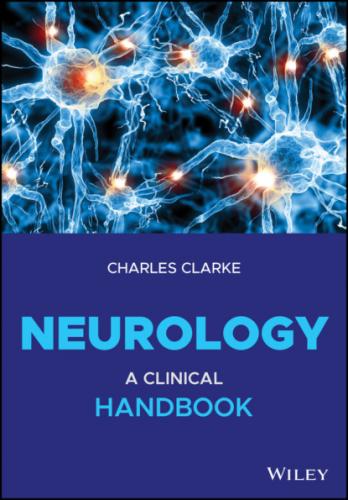Further Reading and Information
1 Clarke C, Lemon R. Nervous system structure & function. In Neurology A Queen Square Textbook, 2nd edn. Clarke C, Howard R, Rossor M, Shorvon S, eds. John Wiley & Sons, 2016. There are numerous references.
2 Champney TH. Essential Clinical Neuroanatomy, 1st edn. Wiley Blackwell, 2016.
3 Fitzgerald’s Clinical Neuroanatomy and Neuroscience, 8th Edition. Mtui E, Gruener G, Dockerty P. Elsevier, 2020.
4 Hopkins AP, Clinical Neurology: A Modern Approach. Oxford Medical Publications, 1993.
Also, please visit https://www.drcharlesclarke.com for free updated notes, potential links and references. You will be asked to log in, in a secure fashion, with your name and institution.
3 Aetiologies and Mechanisms: Genetics, Immunology and Ion Channels
Many neurological diseases have aetiologies that require an understanding of genetics, immune mechanisms and the way neuronal cell membranes – and thus ion channels – react. This chapter considers these briefly.
Genetics
I have approached this in two ways. The first is to trace the embryological development of parts of the CNS – and here I have selected the spine and spinal cord, where genes have been identified that deal with either longitudinal or axial spinal development. The second is to illustrate how mutations and other abnormalities translate into neurological diseases. The basic genetics are summarised here, but picked up in the third section of this chapter – in channelopathies. I assume an understanding of Mendelian and mitochondrial inheritance, DNA, RNA, and chromosomes.
Despite the major advances, genetics plays little part in the day‐to‐day neurology of headache, seizures and even conditions such as malignant neoplasms, MS and most cases of Parkinson’s. This may change in years to come.
Essential Embryology of the Spine
The adult spine is divided into the cranio‐cervical junction, cervical, thoracic, lumbar and sacro‐coccygeal spine. In early foetal life the ectodermal germ layer forms the primitive neural tube that gives rise to the entire nervous system. This tube closes by the end of the fourth intrauterine week; failure of this primary neurulation results in fusion defects such as anencephaly or spina bifida. By this time the brain vesicles are present – the forebrain, midbrain and hindbrain. By the end of the fifth intrauterine week mesoderm that lies around the neural tube completes segmentation into somite pairs, from the occiput to the coccyx. Epithelioid cells of these somite pairs transform rapidly and migrate towards the notochord where they differentiate into three cell lines: sclerotomes – connective tissue, cartilage and bone, myotomes – segmental muscle and dermatomes. In the sclerotomes, chondrification leads on to ossification – anterior and posterior centres for each vertebral body and two for each arch. This is largely complete by the 12th week of foetal life.
Disruption during these stages accounts for many anomalies. After the third month the vertebral column and dura lengthen more rapidly than the cord. By term, the cord tip typically lies at the L2–3 interspace. The spine can be identified on ultrasound at 12 weeks and its integrity determined by 20 weeks.
Figure 3.1 Genetic control of spinal development – putative mechanisms.
Source: Courtesy of Dr Simon Farmer.
Genetic Control of Spinal Development
The notochord provides the template for spinal development – its remnants persist as the nucleus pulposus of the discs (Figure 3.1). The notochord orchestrates production of numerous signalling molecules. One is initiated by the protein product of a notochord gene Sonic Hedgehog. Mesoderm becomes segmented into 44 somite pairs (4 occipital, 8 cervical, 12 thoracic, 5 lumbar, 5 sacral and 10 coccygeal) by the end of the fifth week. The driver for this presomitic mesoderm segmentation involves an intrinsic molecular oscillator, a.k.a the segmentation clock. There is rhythmic production of mRNA from genes within the Notch gene‐signalling pathway. Notch‐related genes include Lunatic Fringe (LFNG), Delta‐like (DLL), Presenilin and Mesoderm Posterior 2 (MESP2). Failure of oscillatory signalling leads to failure of segmentation in a rostral–caudal direction. The first, caudal somites are formed normally but then there is loss of segmentation, because of failure of this rhythmicity. Mutations cause skeletal and spinal abnormalities.
Notch genes are involved in longitudinal segmentation. A second group of genes, the Hox (homeobox) family, specifies axial development and defines vertebral shape. In man there are four families of Hox genes (Hox A‐D). Abnormal expression has been demonstrated in mice: for example, mutation of HOXB4 results in duplication of the atlas – a second atlas replaces the axis vertebra. Large Hox mutations produce a severely disrupted body habitus incompatible with intrauterine life. From analysis of mouse and human malformations, many genes have been identified: HOXB4, Notch, PAX1, PAX2, MEOX1, Gli2, Uncx4.1, BMP‐7 and Jun.
Chromosomal Abnormalities, Repeat Expansions and Mutations
These are usually categorised by their mode of inheritance:
autosomal dominant (AD)
autosomal recessive (AR)
X‐linked
mitochondrial inheritance.
Mechanisms typically comprise:
Mutations or other gene defects that affect a protein or an ion channel
Nucleotide repeat expansions such as in Huntington’s disease
Abnormalities in chromosomes, such as trisomy 21 (Down’s)
Digenic (two‐locus) inheritance, such as in some familial Parkinson’s cases
Conditions where genes and environment appear to interact, in an unproven way, such as in MS are less clear.
Autosomal Dominant Inheritance
Huntington’s disease, neurofibromatosis type 1, tuberous sclerosis and myotonic dystrophy are typical examples. There is usually a family pedigree.
Autosomal Recessive Inheritance
Most recessive traits are rare and typically follow consanguinity.
AR cerebellar ataxias (Chapter 17), neuropathies (Chapter 10), hearing loss (Chapter 15) and progressive external ophthalmoplegia (Chapter 14) are examples.
Individuals who are heterozygous are usually phenotypically normal. However, when
